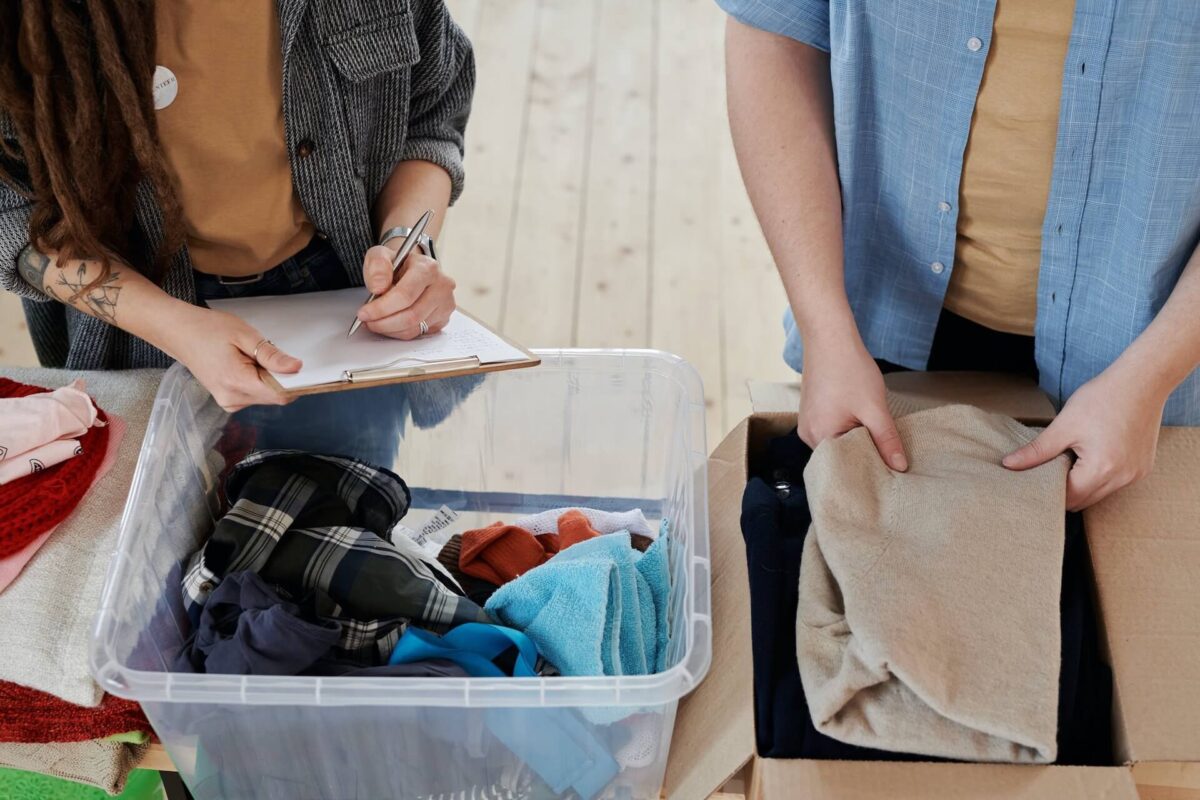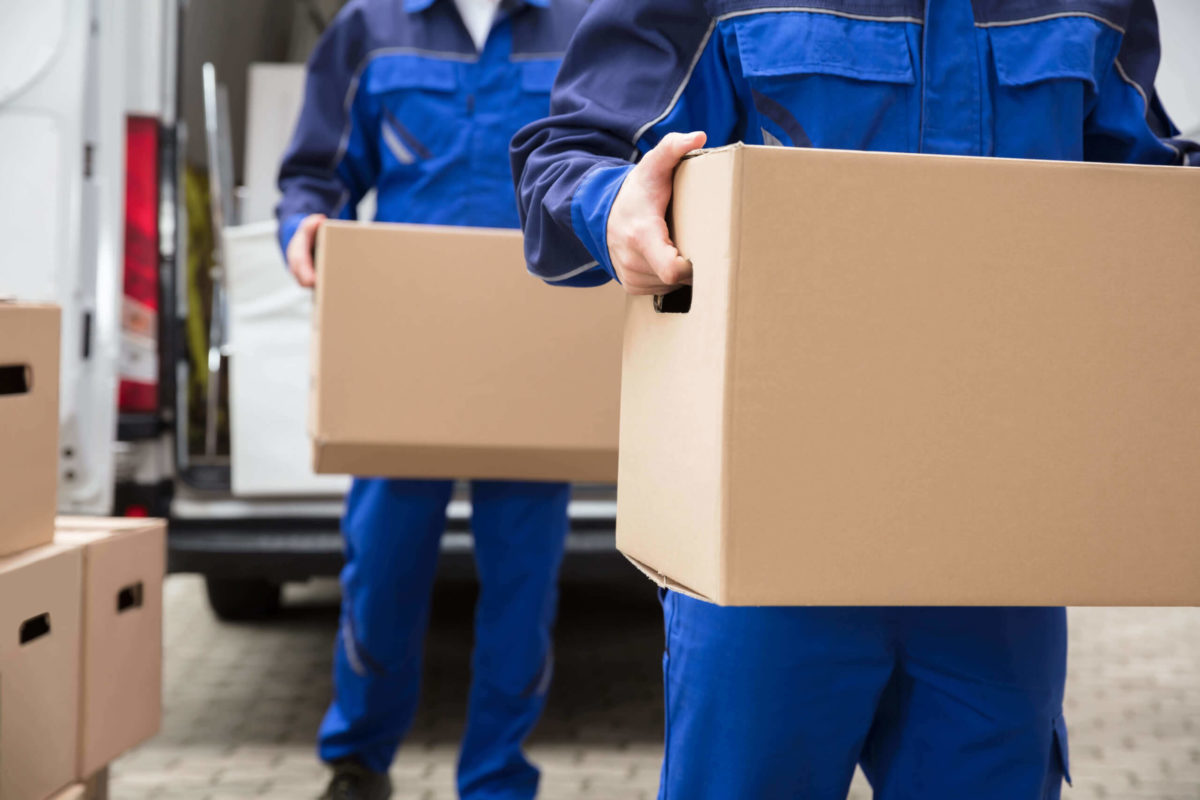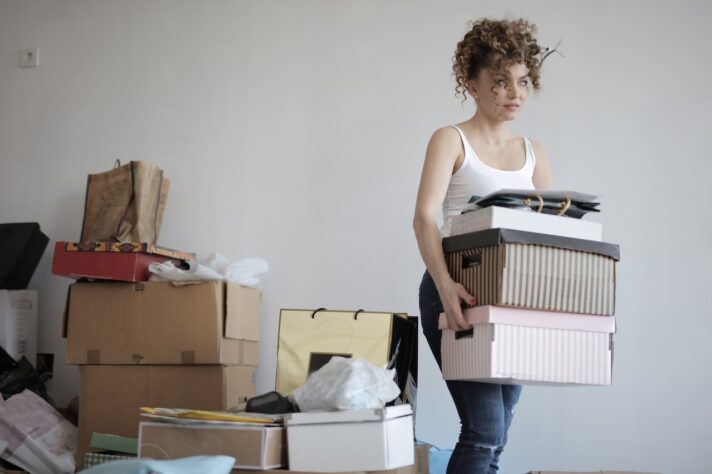When prioritizing boxing up for the relocation, start with non-essential items to create space and reduce clutter. Creating a list of rooms to address first and strategizing your clothing relocation will allow for a systematically handled space and wardrobe. Utilize top boxing-up tips to enhance efficiency, or consider hiring professionals to assist you with the whole process.
What to Start Packing First When Moving Across the Country
Moving cross-country presents unique challenges, but knowing what to start packing first when moving can ease the stress. Dive into our comprehensive guide that offers insights and tips to ensure that your belongings are well-organized, safe, and ready for the long journey ahead. From non-essentials to valuables, we’ve got you covered every step of the way.


Why Is It Important to Prioritize Packing?
Embarking on a move can be daunting, and prioritizing and organizing packing isn’t merely about filing boxes – it’s about ensuring a smooth and stress-free transition to your new abode. A systematic packing method minimizes the risk of damages, misplacements, and last-minute chaos.
By determining which items to box up first and which to keep handy until moving day, you pave the way for efficient moving. This tactic not only reduces relocation stress but also saves money and time, making your relocation experience a breeze. Remember, every well-executed move starts with a well-thought-out packing plan.
What to Start Packing First When Moving – Non-Essential Items Should Go First
The anticipation of a move, be it interstate or across the country, brings with it a whirlwind of tasks and decisions. Among these decisions, determining what to pack first stands paramount. Beginning with non-essential items is not just a matter of convenience but a strategic move to streamline the entire process.
Boxing up these items first allows you to downsize for a move, giving you a clearer visual and mental space to operate in. It reduces the risk of last-minute panic and offers a paced approach to the ensuing tasks. In the following sections, we’ll delve deeper into identifying these items, ensuring your relocation essentials are at arm’s reach and everything else is safely stored and ready to go.
Storing Away the Winter Gear During Sunnier Days and Vice Versa
As you initiate the relocation process, it’s prudent to start with items you won’t be using shortly. Seasonal items top this list. If you are relocating during summer, your winter gear can safely be packed away without causing any inconvenience. Similarly, your summer essentials can be the first to go into the boxes during colder months.
The Art of Safeguarding Wall Hangings, Paintings, and Home Adornments
While decorative items like wall hangings, paintings, and other embellishments add charm to our living spaces, they aren’t essential for daily functionality. Begin your relocation journey by carefully storing these items. This ensures that delicate or cherished decorations are safely tucked away, preventing potential damage in the hustle and bustle that often precedes relocation day.
The Practicality Behind Boxing-up Non-Daily Essentials
In the age of digitalization, while we might turn to online platforms for entertainment and knowledge, there’s still a place for physical books, DVDs, and your record collection. However, unless you’re in the middle of a gripping novel, boxing up your goods in the rhythm of your favorite band, or have a weekly movie night ritual, these items can be among the first to be boxed.
Check the video below on how to safeguard your vinyl collection.
Streamlining Your Home Essentials and Only Keeping Immediate Necessities
Linens and towels, though crucial, are often available in abundance in households. As you approach your relocation to a new home, it’s advisable to pack away the extra sets and retain only what you’ll need for a short period. This not only reduces the bulk of items you’re handling daily but also ensures that your essentials are organized and easily accessible.


Make a List of Rooms to Tackle First
One of the most significant relocation benefits is having a clear roadmap, and in the context of boxing up your possessions, this means determining which rooms to tackle first. By creating a to-do list, you ensure that every space gets the attention it deserves in a systematic order. This not only makes the process manageable but also imparts a sense of accomplishment as you check these less-used rooms off the list:
- Guest Rooms – often untouched and free from daily clutter, these can be your starting point. Once cleared, they can also serve as temporary storage for packed boxes.
- Basements – often a mix of old furniture, seasonal items, and forgotten belongings.
- Attics – usually filled with keepsakes, old clothes, and rarely used items.
- Garages – essential tools, gardening equipment, and occasionally items meant for disposal or donation.
- Formal dining room – this space houses items like china, glassware, and other fragile pieces. Since it is not in daily use, you can approach it after the frequently used rooms but before the main living areas to ensure fragile items are packed securely.
- Home office – important documents, office supplies, and valuable electronics. Make sure to keep essential papers handy and pack non-essential paperwork early.
- Libraries or reading rooms – books can be heavy and may require multiple medium-sized boxes. It’s a good idea to start sorting through what to keep and what to give away.
Packing Up Rarely-Used Appliances and Electronics
In every household, there are old appliances and electronics that, while once essential, have taken a backseat due to evolving habits or newer technologies. Think about that waffle maker received as a wedding gift, only used on a few leisurely Sunday mornings. Or the extra TV that’s been relegated to the guest room, often switched off for months.
And let’s not forget the DVD player, now overshadowed by streaming services. Sorting through these items early in the relocation process is strategic and smart. Not only does it reduce the load, but it also allows you to assess their value. Do they warrant a spot in your new home, or is it time to donate unwanted items to charities such as Goodwill or The Salvation Army?


Strategizing Your Wardrobe and Clothing Relocation
While it’s tempting to hang onto every piece, relocating offers a prime opportunity for a reset. Begin with special occasion attire – those formal dresses, tailored suits, and outfits reserved for specific events. Given their infrequent use, they’re prime candidates for early boxing up.
As for daily wear, consider boxing up items that aren’t in your current rotation. Perhaps it’s those jeans you’re saving for when you shed those extra pounds or that sweater you adore but haven’t worn in ages. By methodically categorizing your clothing, you not only streamline your relocation but also set the stage for an organized wardrobe in your new home.
Preserving Memories by Safely Storing Collectibles and Sentimental Items
These items, rich in sentiment and often irreplaceable, demand special care during relocation. Beginning the storing process with these possessions is about ensuring their physical safety with bubble wrap or sturdy boxes and respecting their emotional value. Dedicating time to them allows you to reflect, reminisce, and decide the best way to preserve and transport these tangible fragments of your journey.


Top Tips for Efficient Packing Experience
With a strategic approach and some insider relocation tips, packing can be transformed from a chaotic mess into a smooth operation. Below, we delve into some top recommendations that promise to make this process not just efficient but also a lot more manageable.
Be Proactive by Starting Early so You Can Have Enough Time on Your Side
One of the cardinal rules of an efficient move is to give yourself the gift of time. Starting the packing process early removes the frantic rush associated with last-minute scrambles, allowing you to be systematic, organized, and less stressed. An early start provides ample opportunity to assess every aspect of this relocation with a clear mind, ensuring that you transport only what’s truly necessary to your new abode.
Importance of Clear Labeling for Easy Unpacking
The simple act of labeling your moving boxes with detailed contents and their intended destination room can streamline the unpacking process immensely. Beyond just a “Kitchen” or “Bedroom” label, consider noting key items or fragile warnings. This small effort pays off when you arrive at your new home, making the setup process intuitive and hassle-free.
Moving
Our mission is to bring high quality, long distance moving services to every customer.
Packing
Our expert moving teams are trained to ensure the safety of your personal belongings.

Storage
Cross Country Moving Company is the most trusted name in auto industry in the country.
Invest in Quality Packing Materials
While it might be tempting to cut corners with old boxes and scanty protective materials, a successful move often hinges on the quality of your packing materials. Investing in sturdy boxes, quality bubble wrap, and durable tape can mean the difference between your belongings arriving intact or in pieces. Think of these different materials as a protective shield for your valuables, ensuring they withstand the rigors of transportation.
Create a Moving Checklist to Keep Track of Tasks
The journey of relocating can often feel like a whirlwind of tasks, deadlines, and decisions. Enter the moving checklist – your north star amidst this chaos. By itemizing tasks, from major milestones to minute details, a checklist provides structure to the seemingly insurmountable.
It serves as a constant reminder, ensuring nothing slips through the cracks, and gives a satisfying sense of accomplishment as each item is ticked off. In the symphony of relocation, a checklist is the conductor, ensuring each component plays its part in harmony.


Hire Cross Country Moving Company to Help You With Packing
At Cross Country Moving Company, we understand the intricacies and challenges of relocating over vast distances. That’s why we’ve dedicated ourselves to offering expert relocation solutions that ensure your belongings are shipped to their destination safely and securely. Our comprehensive long-distance moving services go beyond just transportation.
We offer professional packing services tailored to safeguard your possessions. Every item, from the most delicate heirloom to the bulkiest furniture, is handled with utmost care. Entrusting your relocation to us means granting yourself the peace of mind of knowing industry experts are at the helm, ensuring every aspect of your relocation is executed flawlessly.


With Our Help, You’ll Be Setting the Stage for a Seamless Move in No Time
Navigating the complexities of long-distance moving can be overwhelming, but with Cross Country Moving Company by your side, you’re setting the stage for a seamless and safe transition to your new home.
Our long-distance movers will take care of every detail, from boxing up to transportation, ensuring they are meticulously managed, providing a hassle-free experience. If you’re looking for unparalleled expertise and a commitment to your satisfaction, contact us today. Together, we’ll ensure your next relocation is smooth, efficient, and one to remember.
FAQ
What Is the Best Way to Prioritize Items for Packing When Preparing for a Move?
Starting with items that you rarely use or won’t require until after the relocation can make the process smoother. For better organization, it’s beneficial to categorize your belongings into groups such as non-essential, semi-essential, and essential. Furthermore, crafting a boxing-up timeline and a relocation checklist ensures a systematic approach, making certain that nothing is inadvertently left behind.
Why Is It Recommended to Pack Non-essential Items First?
Beginning this process with non-essential items is a strategy that offers multiple advantages. For one, it significantly reduces clutter. As these items are boxed up, your living space becomes more organized, simplifying the task of storing away other belongings.
This method also allows you to methodically pack over time, ensuring that your daily routine remains largely undisturbed. Moreover, by addressing the non-essentials initially, you’re sidestepping the frantic rush that often accompanies last-minute boxing up, granting you a clearer perspective on the items that still need to be packed.
How Can I Decide Which Rooms to Pack up First?
Primarily, consider the frequency with which you use each room. Spaces like guest bedrooms, basements, or attics that don’t see daily activity can be packed ahead of others. The function of the room also plays a role.
For instance, formal dining rooms or libraries, which might not play a part in daily living, can be prioritized earlier in the relocation timeline. Additionally, embarking on smaller rooms or those with fewer belongings can provide a quick sense of accomplishment, setting a positive tone for the rest of this process.
Are There Particular Items That Are Often Overlooked or Left Till the Last Minute?
In the rush of relocating, daily essentials like toiletries, chargers, and medications might be forgotten. Perishables in the fridge and freezer can also be overlooked, along with garden tools and other items stored outdoors. Additionally, crucial documents, such as passports and important papers, are often inadvertently missed. Other commonly forgotten items include things hidden under beds, behind furniture, or stashed in the back of closets.
How Early Should I Start Packing Before the Moving Day?
It’s advisable to start the boxing-up process as early as 6-8 weeks before moving day, especially for larger homes or families. This timeline allows you to pack at a comfortable pace, sort through items, declutter, and organize efficiently.
Should I Pack My Off-Season Clothing First, Even if I Might Need Them Shortly After Moving?
It’s generally a good idea to store off-season clothing first. However, if you anticipate you’ll need certain off-season items shortly after your relocation, set those items aside in a clearly labeled box or suitcase. This way, they’re easy to access upon arrival without having to unpack everything.
When Using a Cross-Country Moving Service, Should I Rely on Them for Packing, or Is It Better to Pack Some Items Myself?
While cross-country moving companies offer professional packing services, many people choose to pack non-essential items themselves and leave large and bulky items, such as furniture, to the experts to ensure proper protection during the long journey.
How Early Should I Engage a Long-Distance Moving Company Before My Move to Get Advice on Packing Priorities?
It’s advisable to contact the cross-country movers at least 8-12 weeks before your move. This gives you ample time to receive guidance, secure the right supplies, and make necessary preparations.







